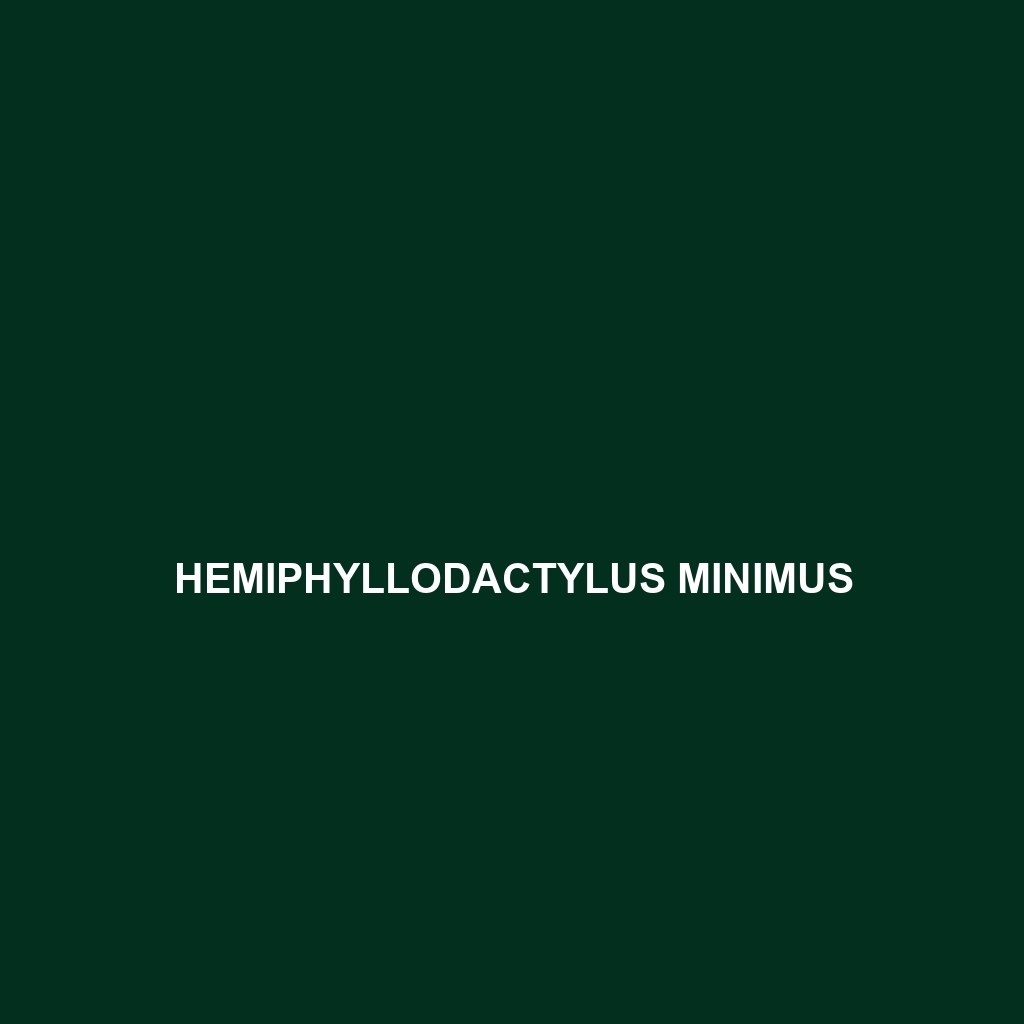Common Name
Hemiphyllodactylus minimus
Scientific Name
Hemiphyllodactylus minimus
Habitat
The Hemiphyllodactylus minimus, commonly known as the least gecko, is predominantly found in tropical and subtropical regions, particularly on the island of Sumatra in Indonesia, and parts of Borneo. This species prefers habitats such as rainforests, where high humidity and dense vegetation provide essential cover and moisture. They are often observed in temperate forests and can occasionally be found in disturbed areas near human settlements. The warm, moist environments of these habitats allow Hemiphyllodactylus minimus to thrive, contributing to its ecological niche.
Physical Characteristics
Physically, the Hemiphyllodactylus minimus is known for its small size, typically measuring around 3 to 5 centimeters in length. Its slender body is easily distinguishable, featuring a long, flattened tail that aids in balancing and maneuverability. The skin is predominantly light brown or tan, with darker mottling that provides effective camouflage against the tree bark and leaves in its natural habitat. The smooth texture of its skin, along with its slender limbs, gives it an agile nature that makes it a proficient climber.
Behavior
Hemiphyllodactylus minimus exhibits primarily nocturnal behavior, becoming active after sunset. During the night, these geckos can be seen foraging for food, utilizing their keen eyesight to detect insects and other small invertebrates. Social interactions are minimal, as they tend to be solitary creatures, coming together primarily for mating purposes. Their stealthy movements help them avoid predators, and they have been observed using specialized climbing skills to navigate vertical surfaces, such as trees and rocky outcrops.
Diet
The diet of Hemiphyllodactylus minimus consists mainly of insects, making it an insectivore. It feeds on a variety of small arthropods, including ants, beetles, and flies, which it captures using its quick reflexes and adhesive toes that allow for a firm grip on surfaces. The gecko’s feeding patterns involve active hunting during the night, taking advantage of the low light levels to ambush unsuspecting prey. Its role as a predator helps maintain the balance of the ecosystem by controlling insect populations.
Reproduction
The reproductive cycle of Hemiphyllodactylus minimus involves several intriguing behaviors. Mating occurs throughout the year, though spikes in activity may occur during the wetter months. Females lay small, white eggs that are typically deposited in hidden locations such as leaf litter or under bark. The incubation period lasts approximately 4 to 6 weeks, after which hatchlings emerge. Parental care in this species is minimal, with the young being independent from birth, illustrating a common trait among many gecko species.
Conservation Status
According to the IUCN Red List, Hemiphyllodactylus minimus is classified as a species of Least Concern. However, habitat destruction due to logging and land conversion poses a significant threat to their native environments. Conservation efforts are essential to monitor populations and safeguard habitats, particularly in regions prone to deforestation. Awareness and education about the significance of preserving rainforest ecosystems are critical to ensuring the future survival of this species.
Interesting Facts
One interesting fact about Hemiphyllodactylus minimus is its ability to drop its tail as a defense mechanism against predators. This adaptation, known as autotomy, allows the gecko to escape while the discarded tail continues to move, distracting potential threats. Additionally, these geckos are known for their adhesive toe pads, which enable them to climb smooth surfaces effortlessly. This unique adaptation not only aids in their hunting strategy but also helps them evade predators.
Role in Ecosystem
Within its ecosystem, Hemiphyllodactylus minimus plays several vital roles. As a predator, it helps control insect populations, thus indirectly benefiting plant health and contributing to biodiversity. Furthermore, these geckos serve as prey for larger animals, including birds and snakes, making them a critical part of the food web. Their presence indicates a healthy, functioning ecosystem, and protecting their habitats is essential for maintaining ecological balance.
This description provides detailed information about Hemiphyllodactylus minimus, addressing its habitat, physical characteristics, behavior, diet, reproduction, conservation status, interesting facts, and its role in the ecosystem, all within SEO-optimized content.
